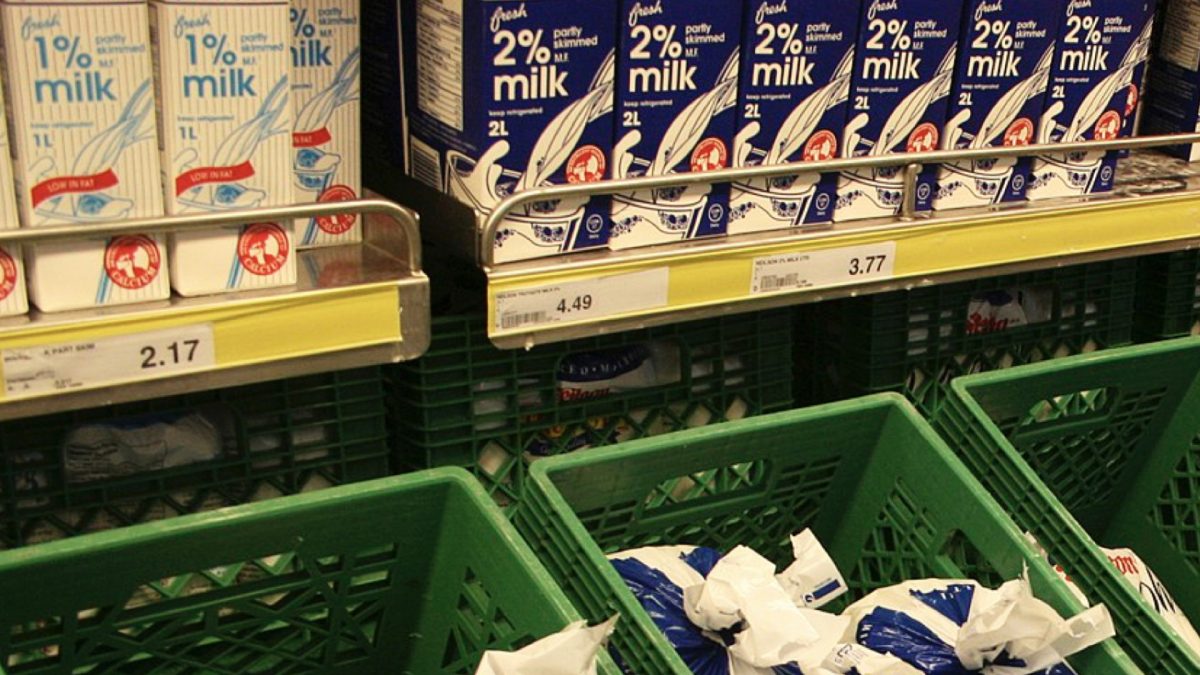Parkinson’s is the second most common neurodegenerative disease after Alzheimer’s. Each year in the United States, approximately 60,000 new cases are diagnosed, bringing the total number of current cases up to about a million, with tens of thousands of people dying from the disease every year. The dietary component most often implicated is milk, as I discuss in my video Could Lactose Explain the Milk and Parkinson’s Disease Link?, and contamination of milk by neurotoxins has been considered the “only possible explanation.” High levels of organochlorine pesticide residues have been found in milk, as well as in the most affected areas in the brains of Parkinson’s victims on autopsy. Pesticides in milk have been found around the world, so perhaps the dairy industry should require toxin screenings of milk. In fact, inexpensive, sensitive, portable tests are now available with no false positives and no false negatives, providing rapid detection of highly toxic pesticides in milk. Now, we just have to convince the dairy industry to actually do it.
Others are not as convinced of the pesticide link. “Despite clear-cut associations between milk intake and PD [Parkinson’s disease] incidence, there is no rational explanation for milk being a risk factor for PD.” If it were the pesticides present in milk that could accumulate in the brain, we would assume that the pesticides would build up in the fat. However, the link between skimmed milk and Parkinson’s is just as strong. So, researchers have suggested reverse causation: The milk didn’t cause Parkinson’s; the Parkinson’s caused the milk. Parkinson’s makes some people depressed, they reasoned, and depressed people may drink more milk. As such, they suggested we shouldn’t limit dairy intake for people with Parkinson’s, especially because they are so susceptible to hip fractures. But we now know that milk doesn’t appear to protect against hip fractures after all and may actually increase the risk of both bone fractures and death. (For more on this, see my video Is Milk Good for Our Bones?.) Ironically, this may offer a clue as to what’s going on in Parkinson’s, but first, let’s look at this reverse causation argument: Did milk lead to Parkinson’s, or did Parkinson’s lead to milk?
What are needed are prospective cohort studies in which milk consumption is measured first and people are followed over time, and such studies still found a significant increase in risk associated with dairy intake. The risk increased by 17 percent for every small glass of milk a day and 13 percent for every daily half slice of cheese. Again, the standard explanation is that the risk is from all the pesticides and other neurotoxins in dairy, but that doesn’t explain why there’s more risk attached to some dairy products than others. Pesticide residues are found in all dairy products, so why should milk be associated with Parkinson’s more than cheese is? Besides the pesticides themselves, there are other neurotoxic contaminants in milk, like tetrahydroisoquinolines, found in the brains of people with Parkinson’s disease, but there are higher levels of these in cheese than in milk, though people may drink more milk than eat cheese.
The relationship between dairy and Huntington’s disease appears similar. Huntington’s is a horrible degenerative brain disease that runs in families and whose early onset may be doubled by dairy consumption, but again, this may be more milk consumption than cheese consumption, which brings us back to the clue in the more-milk-more-mortality study.
Anytime we hear disease risks associated with more milk than cheese—more oxidative stress and inflammation—we should think galactose, the milk sugar rather than the milk fat, protein, or pesticides. That’s why we think milk drinkers specifically appeared to have a higher risk of bone fractures and death, which may explain the neurodegeneration findings, too. Not only do rare individuals with an inability to detoxify the galactose found in milk suffer damage to their bones, but they also exhibit damage to their brains.
Other than avoiding dairy products, what can we do to reduce our risk of Parkinson’s? See Is Something in Tobacco Protective Against Parkinson’s Disease? and Peppers and Parkinson’s: The Benefits of Smoking Without the Risks?.
You may also be interested in my videos Treating Parkinson’s Disease with Diet and Parkinson’s Disease and the Uric Acid Sweet Spot.
For the effect of foods on another neurodegenerative disease that affects our ability to move normally, see ALS (Lou Gehrig’s Disease): Fishing for Answers and Diet and Amyotrophic Lateral Sclerosis (ALS).
In health,
Michael Greger, M.D.
PS: If you haven’t yet, you can subscribe to my free videos here and watch my live, year-in-review presentations:
- 2012: Uprooting the Leading Causes of Death
- 2013: More Than an Apple a Day
- 2014: From Table to Able: Combating Disabling Diseases with Food
- 2015: Food as Medicine: Preventing and Treating the Most Dreaded Diseases with Diet
- 2016: How Not To Die: The Role of Diet in Preventing, Arresting, and Reversing Our Top 15 Killers
